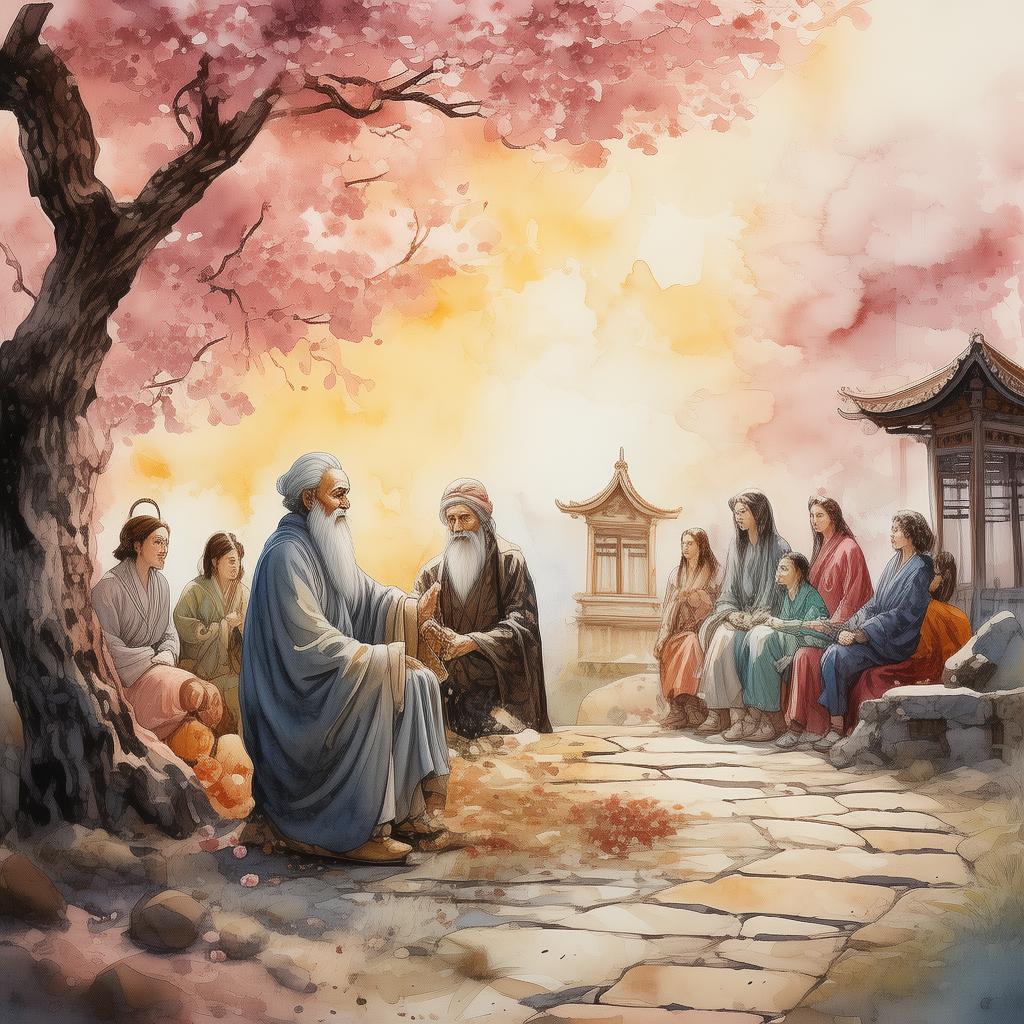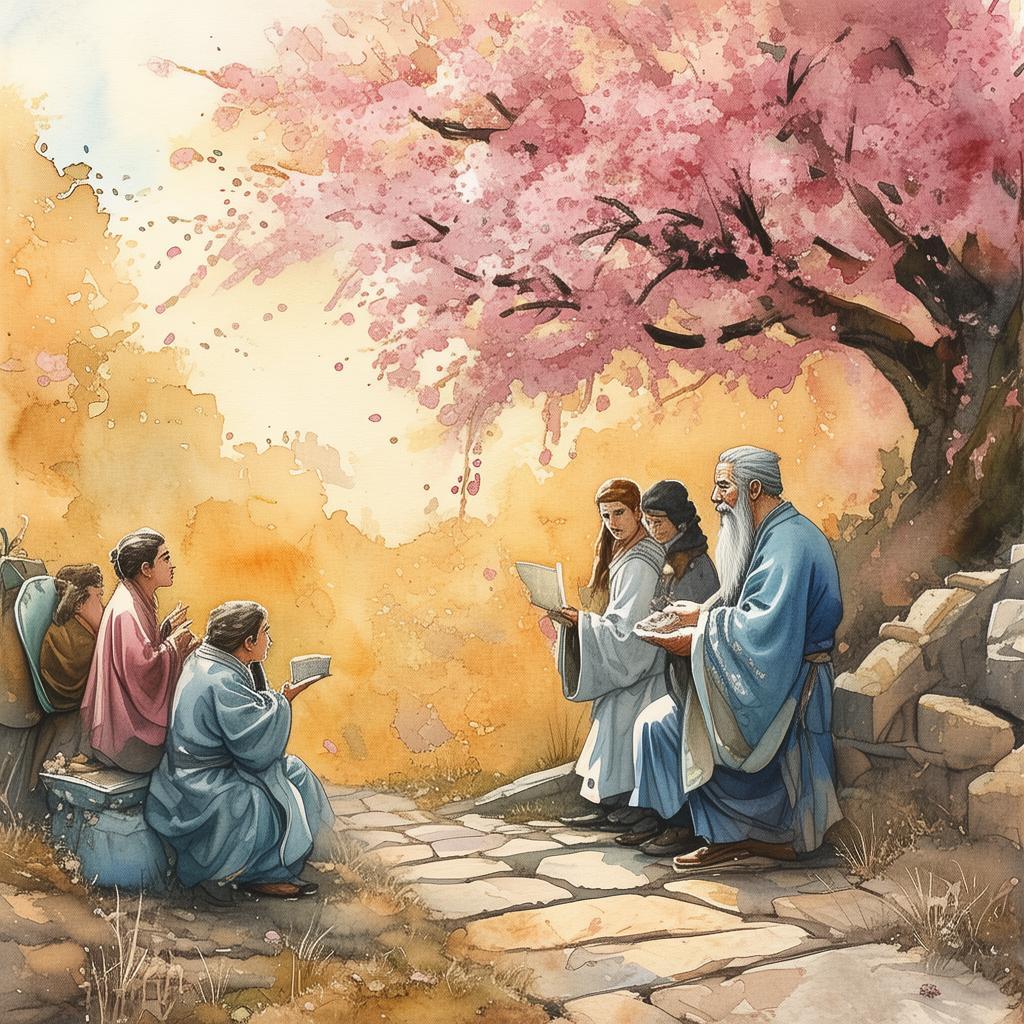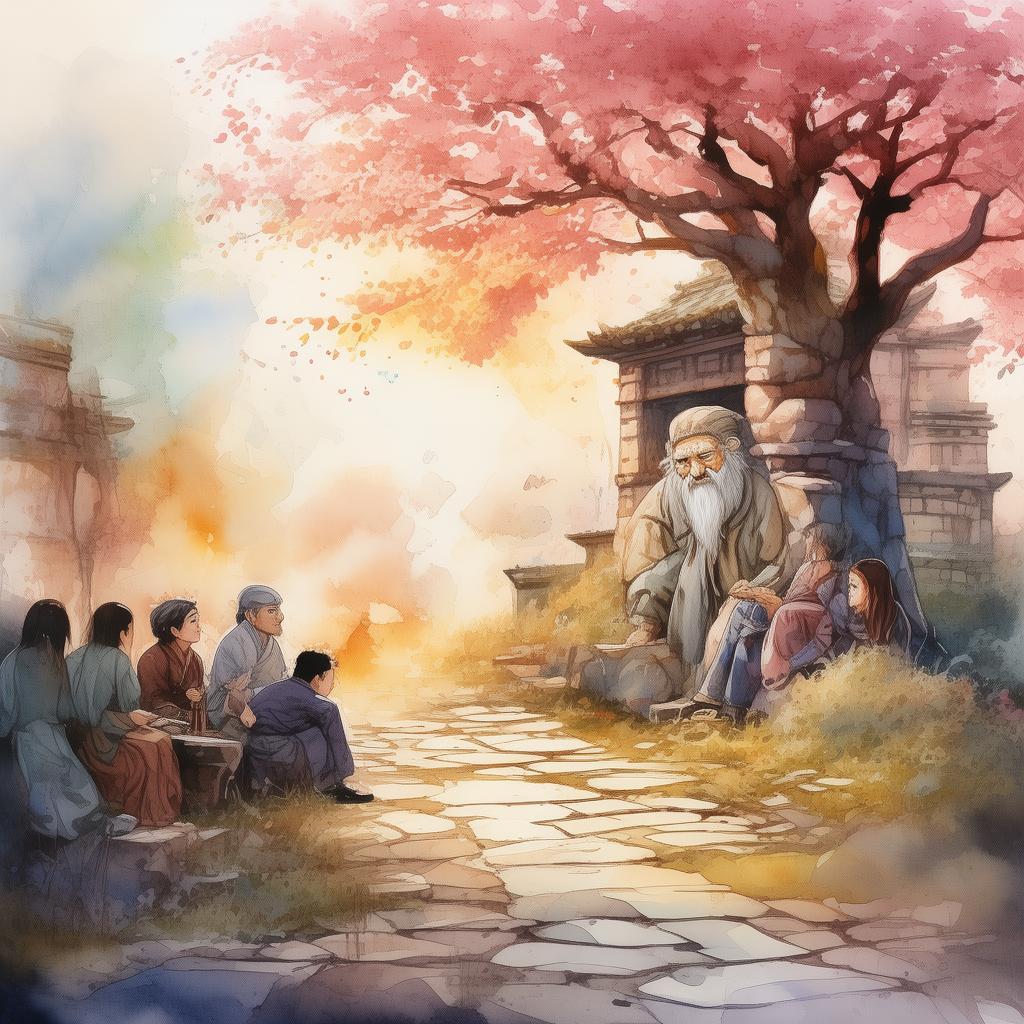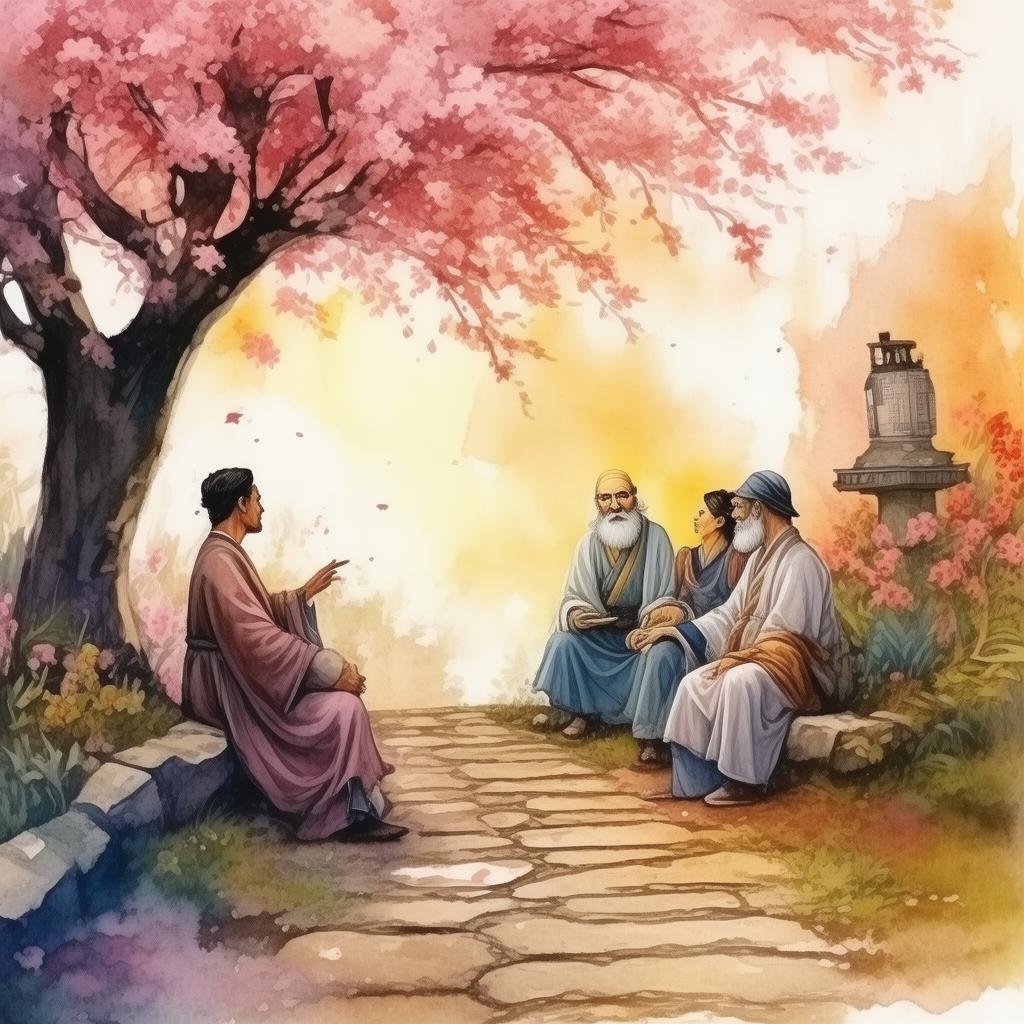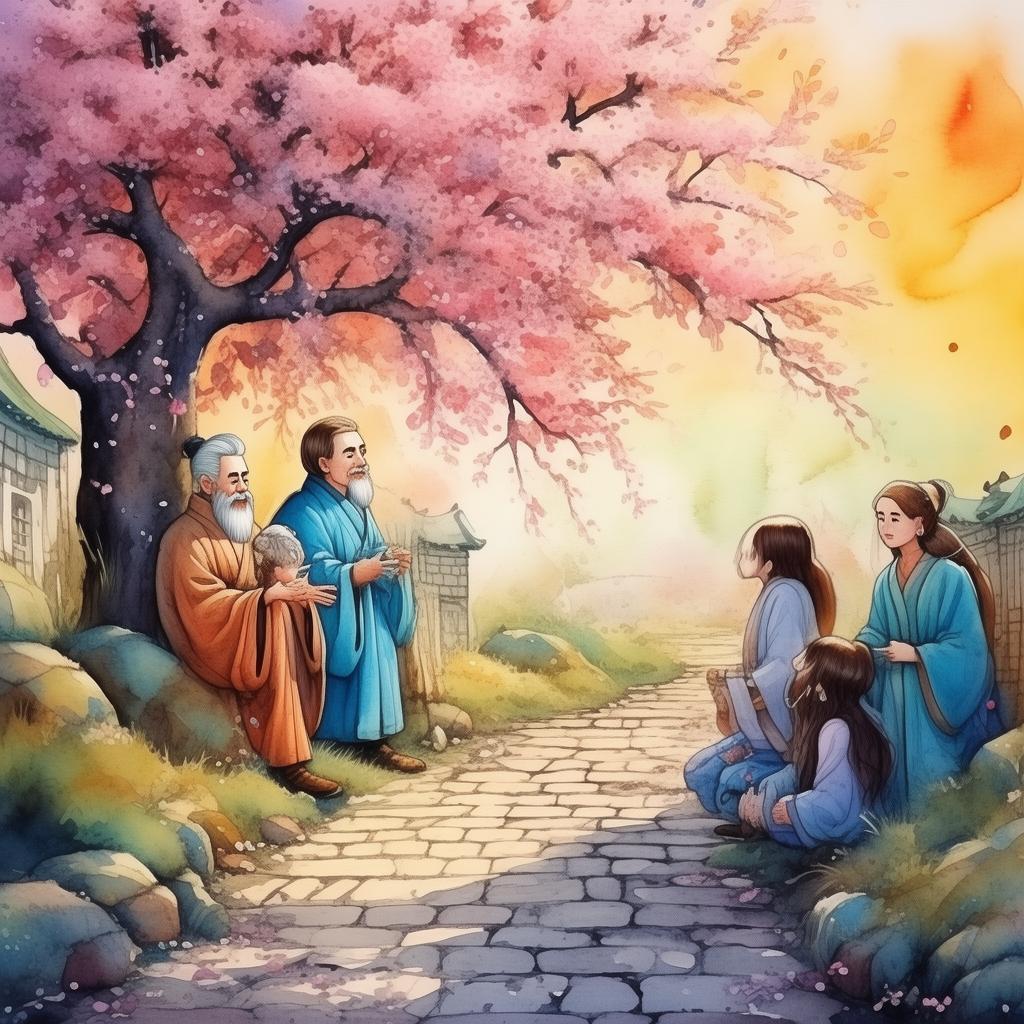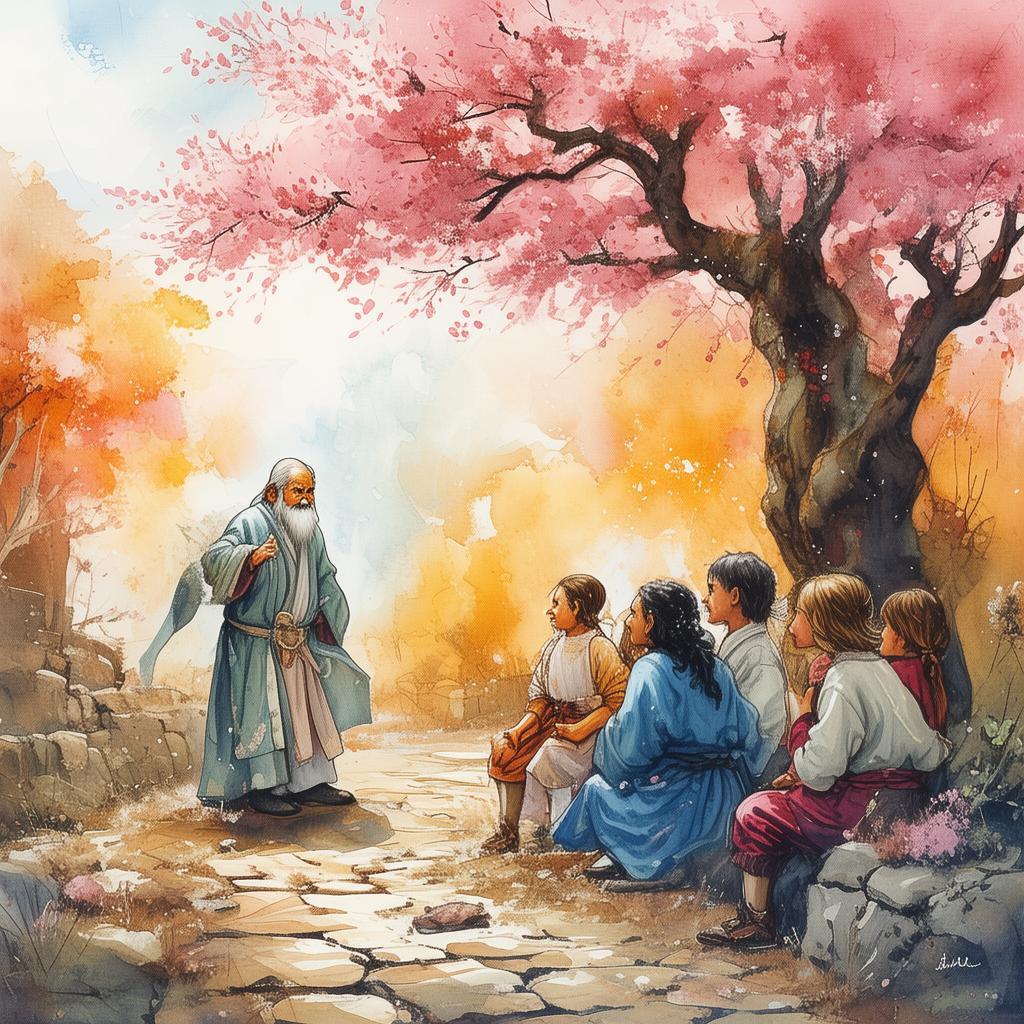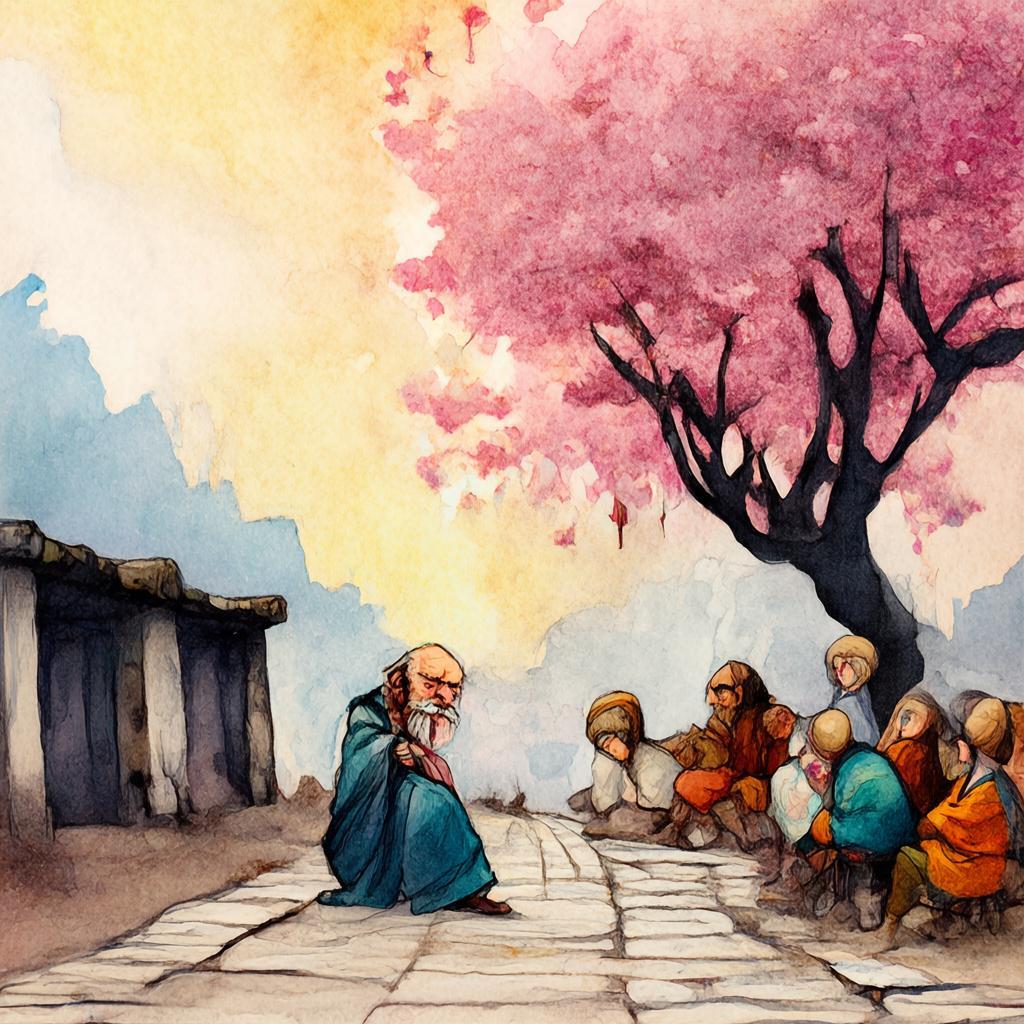The Bond of Debt: A Tale of Redemption and Freedom
In the bustling city of Jinli, where the scent of commerce mingled with the clamor of life, there lived a young man named Ming. Ming was a weaver, a craft that had been passed down through generations of his family. His hands, calloused and skilled, wove intricate patterns into the fabrics that adorned the city's finest garments. Yet, despite his craft's prestige, Ming found himself trapped in a cycle of debt, a cycle that had ensnared his family for generations.
The tale of Ming's debt began with a simple misfortune. His father, a once prosperous merchant, had invested in a venture that promised untold wealth. When the venture failed, it brought the family's fortune to its knees. Ming's father, unable to bear the weight of the debt, succumbed to despair and took his own life. Ming, then just a child, was left with a burden he did not fully understand—the family debt that would define his life.
Years passed, and Ming grew into a man. He worked tirelessly, his loom clacking ceaselessly, producing fabrics that fetched high prices. Yet, no matter how much he earned, the debt seemed to grow, a relentless monster that consumed his every gain. He became known as the "Debt-Enslaved," a name that whispered through the city's alleys, a testament to his plight.
One day, Ming met a wise old man named Tao, who had heard of his struggle. "You are bound not by the debt itself," Tao said, "but by the fear of it. The true chains are those of the mind."

Tao's words struck a chord within Ming. He realized that the debt was not just a financial burden, but a mental one, a weight that had twisted his perception of himself and his world. Determined to break free, Ming embarked on a journey of self-discovery and redemption.
Ming's first step was to confront the people he owed. With a heart full of humility and a mind unwavering in his resolve, he approached each of them. He listened to their stories, learned of their struggles, and offered to work for them, not as a weaver, but as a laborer. He became a humble servant, performing tasks that few would deign to do, all in the name of repaying his debt.
His actions did not go unnoticed. The people of Jinli began to see Ming not as the Debt-Enslaved, but as a man of compassion and determination. They shared their food with him, their stories, and even their hope. Ming's heart swelled with gratitude and the realization that he was not truly alone.
As Ming worked, the fabric he wove became more than just cloth; it became a testament to his journey. Each thread was a story, a lesson, a triumph over adversity. He named his creation "The Fabric of Freedom," a symbol of his struggle and his hope for a debt-free life.
The day of reckoning finally arrived. Ming gathered all his creditors in the grandest hall of Jinli. He presented them with his "Fabric of Freedom," explaining that each thread represented a part of his debt, a part that he had paid with his labor, his sweat, and his soul.
The creditors were moved by Ming's story. They saw not a man bound by debt, but a man freed by his own spirit. One by one, they agreed to forgive Ming's debt, recognizing that true freedom came not from wealth, but from the heart.
Ming walked out of the hall a free man, not just from his financial chains, but from the mental and emotional bondage that had defined him. He returned to his loom, not to weave for profit, but to weave for the joy of creation, to weave the dreams and aspirations of others into his fabric.
The Debt-Enslaved had become the Weaver of Freedom, a symbol of hope in a world where debt could enslave the soul. His story spread far and wide, a tale of redemption and the indomitable human spirit. And so, Ming's tale lived on, a beacon of light in the darkening shadow of debt, a testament to the power of courage and the beauty of forgiveness.
✨ Original Statement ✨
All articles published on this website (including but not limited to text, images, videos, and other content) are original or authorized for reposting and are protected by relevant laws. Without the explicit written permission of this website, no individual or organization may copy, modify, repost, or use the content for commercial purposes.
If you need to quote or cooperate, please contact this site for authorization. We reserve the right to pursue legal responsibility for any unauthorized use.
Hereby declared.
